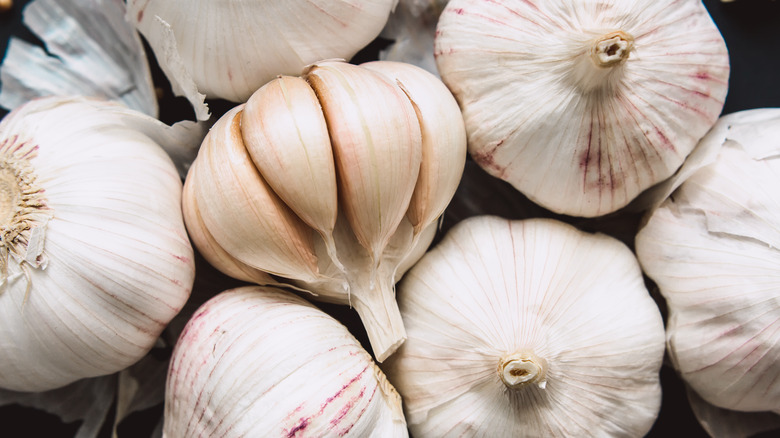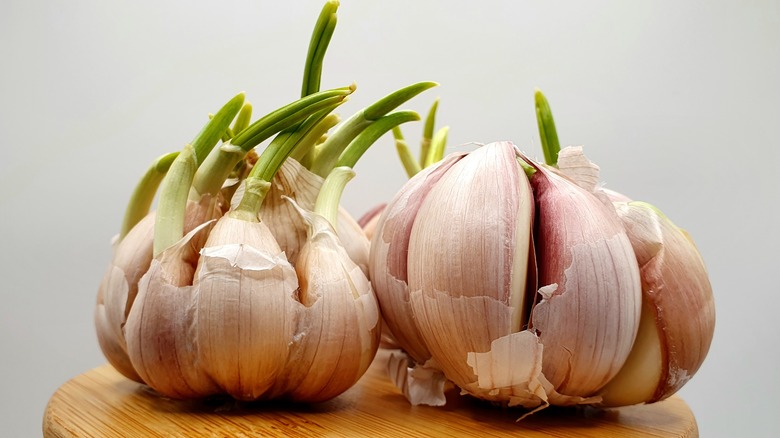Is It Safe To Eat The Green Sprouts In Your Garlic?
When you ponder cuisines from countries around the globe, oftentimes a few simple ingredients will come to mind. In Korea, the aromas of kimchi and soy sauce fill the air, while white wine and shallots are synonymous with French dishes (via Mental Floss). On the other hand, there are other foods that are essential ingredients all across the globe and garlic is one of those foods. Whether you are whipping up a garlic chicken and broccoli stir fry, or baking a scrumptious loaf of garlic bread, garlic has the capacity to add depth and richness to savory foods from various countries and cultures, as noted by Spruce Eats.
Due to the undeniable popularity of this versatile bulb, garlic can be found in many kitchens — and it is a great addition to any pantry for more reasons than one. Not only can this flavorful ingredient be added to a diverse array of dishes, but it also has an incredibly long shelf-life. After purchasing a bulb at the grocery store, it can typically last for nearly six months before going bad, if you know how to buy fresh garlic and abide by the best ways to keep garlic fresh (via Bon Appétit). Even still, many individuals have had the experience of stumbling upon a bad clove, whether it has turned rotten and moldy, developed a foul odor, or grown some unusual green sprouts.
So what do those green sprouts mean, and are they safe to eat?
Green sprouts are far less dangerous than they appear
Peeling a bulb of garlic is all fun and games ... until you find an unfamiliar green monstrosity shooting out of your white clove. Rest assured, green sprouts look far more dangerous than they really are. Green sprouts are perfectly safe to eat: The main issue is, you may not want to eat them. According to Bon Appétit, green shoots taste noticeably different from the garlic clove surrounding them. Rather than the distinct sweet and savory flavor of garlic, unwanted green sprouts have a harsh bitter tang.
If your garlic has gone sprouty on you, you can attempt to remove the green sprout from your garlic by slicing your bulb in half and picking out the unwanted substance, as noted by culinary scientist Jessica Gavin. Removing green sprouts is especially important in recipes that require raw garlic, or in dips and salad dressings, where each flavor is more distinct.
Is garlic a signature component of your dish? If so, then you may also want to consider removing the green sprout, or simply opting for a new, sprout-free clove of garlic to include in your recipe. On the other hand, if garlic is only a peripheral ingredient in your dish, then you can most likely get away with including a green sprout or two in your recipe without consequence.

